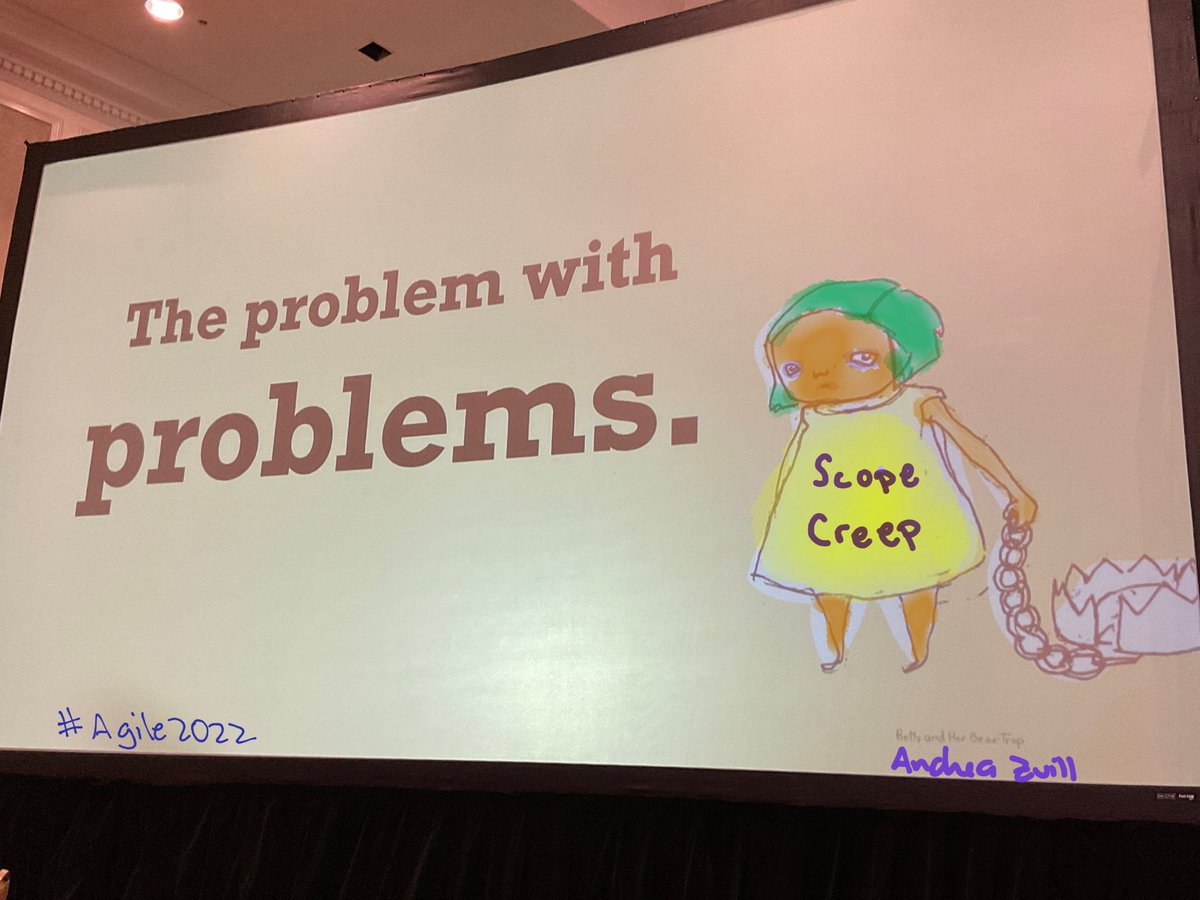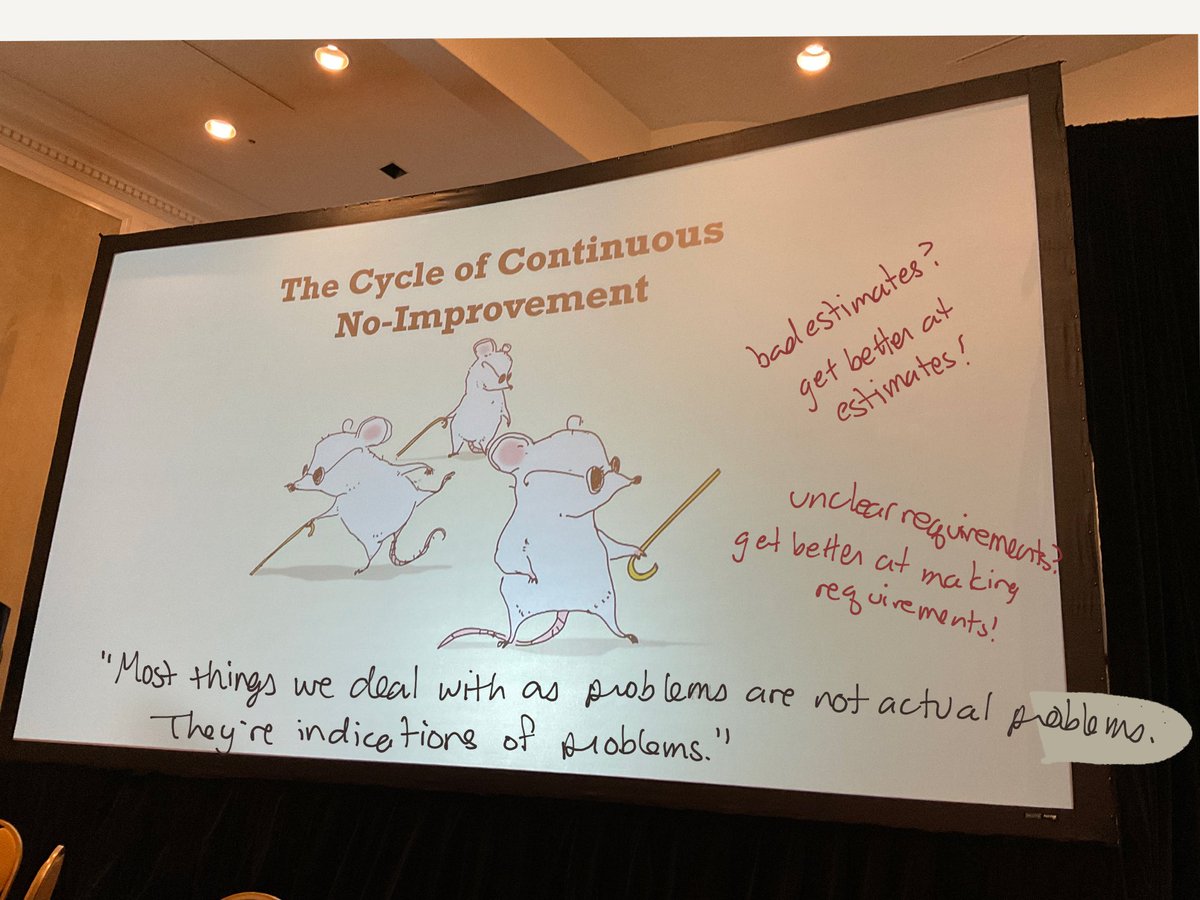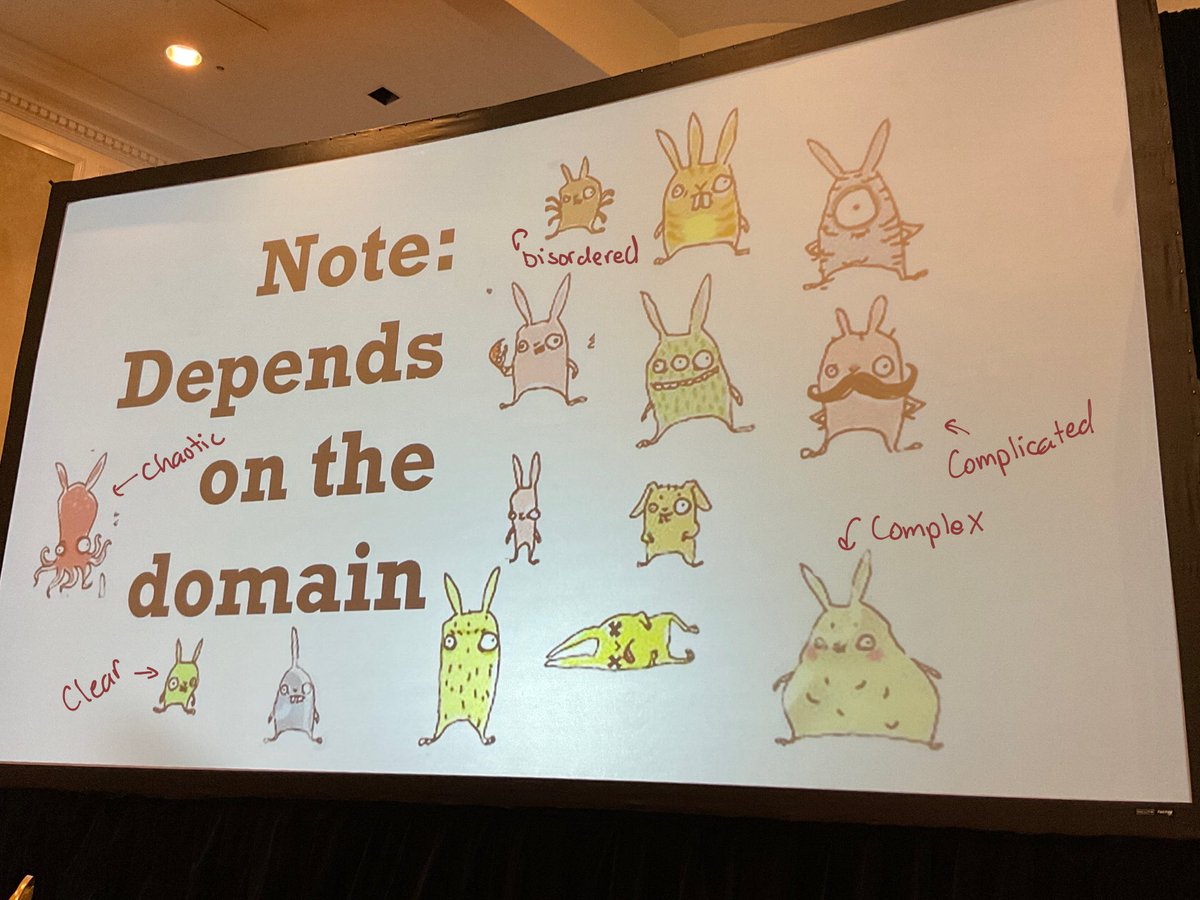
Software is magic because it scales so well.
I can take the output of my brain and scale it to the world.
@KentBeck
I can take the output of my brain and scale it to the world.
@KentBeck
If we go from Idea to Behavior change to new Idea…
how quickly we can do that depends on the structure.
@kentbeck
how quickly we can do that depends on the structure.
@kentbeck

If we go Idea to Behavior to Idea to Behavior
as fast as we can,
it’s gonna get slower and slower and then the developers will get frustrated and leave and the new developers will be even slower…
So sometimes, we make a structure change before the behavior change.
@KentBeck
as fast as we can,
it’s gonna get slower and slower and then the developers will get frustrated and leave and the new developers will be even slower…
So sometimes, we make a structure change before the behavior change.
@KentBeck

Try this: make your commits each a structure change or a behavior change, not both.
Structure changes are much more reversible.
@kentbeck #qconSF
Structure changes are much more reversible.
@kentbeck #qconSF
All the questions that impact software design at a larger scale
also play into this tiny question of: should I tidy first?
@kentbeck #qconsf
also play into this tiny question of: should I tidy first?
@kentbeck #qconsf
Software design is a profoundly human activity, and we are pushed to the limits of our abilities.
But if it doesn’t make economic sense, it doesn’t matter how good we are at it.
We want software design principles that make economic sense.
@kentbeck
But if it doesn’t make economic sense, it doesn’t matter how good we are at it.
We want software design principles that make economic sense.
@kentbeck
Big Design Up Front makes no sense wrt the time value of money.
Spending less and spending later are equivalent.
Move spending into the future, make more money.
@kentbeck #QConSF
Spending less and spending later are equivalent.
Move spending into the future, make more money.
@kentbeck #QConSF
Software design objectives:
Make money sooner, with greater certainty.
Spend money later, with less certainty.
@KentBeck #QConSF
Make money sooner, with greater certainty.
Spend money later, with less certainty.
@KentBeck #QConSF
We work in an area of great uncertainty. What will our software need to do next??
Greater optionality leads to money, in the long term: we have access to different futures. But it can cost more now.
The counterbalancing force to discounting cash flows is optionality.
@KentBeck
Greater optionality leads to money, in the long term: we have access to different futures. But it can cost more now.
The counterbalancing force to discounting cash flows is optionality.
@KentBeck
Coupling: when making a change in one place means ya gotta change other places too.
elements are coupled with respect to a certain change.
elements are coupled with respect to a certain change.
Change difficulty follows a power law distribution.
We live in a natural world in software
(a natural world we aren’t very aware of, but still)
@kentbeck
We live in a natural world in software
(a natural world we aren’t very aware of, but still)
@kentbeck
Most of the cost of software is the cost of change.
Most of the cost of change is due to coupling.
So coupling costs money… but so does decoupling, that takes work.
This is our tradeoff
Most of the cost of change is due to coupling.
So coupling costs money… but so does decoupling, that takes work.
This is our tradeoff
If you tell stakeholders, we’re gonna spend months refactoring the system.
“What are we gonna get after all that ‘refactoring’?” (little dance)
“The same system you have now”
… not relationship-building.
@KentBeck
“What are we gonna get after all that ‘refactoring’?” (little dance)
“The same system you have now”
… not relationship-building.
@KentBeck
We all have the option of doing software design that enhances our relationship with ourselves, our peers, and people with different perspectives.
The more you can make your changes in small safe steps, the more you can preserve your relationships.
@kentbeck
The more you can make your changes in small safe steps, the more you can preserve your relationships.
@kentbeck
• • •
Missing some Tweet in this thread? You can try to
force a refresh















